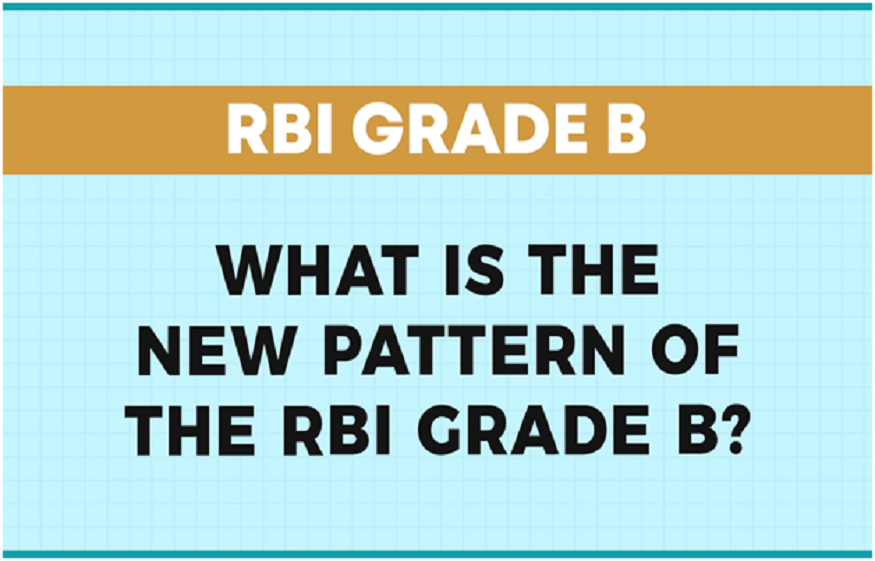
What is the New Pattern of the RBI Grade B?
The RBI Grade B exam is a prestigious and highly competitive examination for aspirants looking to join the Central Bank of India as officers. Cracking this exam requires a thorough understanding of the RBI Grade B syllabus, pattern, and a well-structured preparation strategy.
In this article, we’ll explore the new pattern of the RBI Grade B exam, providing a comprehensive guide for aspiring candidates like you.
RBI Grade B New Pattern
The RBI Grade B new pattern involves three stages:
- Phase 1 (Prelims): This is an objective-type online examination that is qualifying.
- Phase 2 (Mains): This stage consists of 3 papers and includes both objective and descriptive type questions.
- Interview: Candidates who clear Phase 2 are called for an interview.
The final selection is based on the combined performance in Phase 2 (all 3 papers) and the interview.
The New Pattern for RBI Grade B Phase 1 Exam
RBI Grade B Phase 1 pattern consists of 4 subjects with different mark weightage and different sectional timing. Based on the latest information, here’s a breakdown of the new RBI Grade B Phase 2 pattern:
| RBI Grade B
Phase 1 Pattern |
|||
| Subject | Questions | Maximum Marks | Duration |
| General Awareness | 80 | 80 | 25 minutes |
| Reasoning Ability | 60 | 60 | 45 minutes |
| English | 30 | 30 | 25 minutes |
| Quantitative Aptitude | 30 | 30 | 25 minutes |
| Total | 200 | 200 | 120 minutes |
Additional Details of the RBI Grade B Phase 1 Pattern:
- Mode: Online
- The RBI Grade B Phase I exam is conducted via a computer-based online platform, requiring you to answer by selecting options on a screen. Familiarity with the online interface is crucial for efficient test-taking.
- Paper Structure: Objective-type MCQs
- The preliminary exam consists solely of objective-type multiple-choice questions, where you choose the correct answer from a set of options for each question.
- Nature: Qualifying
- RBI Grade B Phase 1 pattern serves as a screening test; the marks obtained do not contribute to the final selection.
- Language: Hindi and English
- You can opt to answer most sections in either Hindi or English based on their preference. However, the English Language section will exclusively be in English.
- Total Questions: 200
- The RBI Grade B Phase 1 paper comprises a total of 200 individual questions across all sections, requiring effective time management to attempt a sufficient number accurately.
- Total Marks: 200
- With each of the 200 questions carrying one mark, the total marks for the RBI Grade B Phase 1 examination amount to 200. Performance is evaluated against this total.
- Cut-Off: Varies annually based on calling ratio.
- The minimum qualifying marks, both overall and for each section, are not fixed and are determined each year depending on factors like the exam’s difficulty level and the number of candidates to be shortlisted for the next stage (the calling ratio).
- Negative Marking:25 marks deducted for wrong answer.
- For every incorrect response, a penalty of 0.25 marks is levied. This highlights the importance of accuracy and prevents random guessing. However, unattempted questions do not incur any penalty.
- Time Duration: 2 hours with sectional timings.
- Candidates are allotted a total of 120 minutes to complete the exam. Importantly, there are sectional timings for each of the individual sections, requiring candidates to manage their time effectively within each constraint.
RBI Grade B New Phase 2 Pattern
Candidates who clear the Phase 1 examination are eligible to appear for the RBI Grade B Phase 2 (Main) examination. This phase comprises 3 papers:
- Paper 1: Economic and Social Issues (ESI)
- Paper 2: Descriptive English
- Paper 3: Finance and Management (FM)
Based on the latest information, here’s a breakdown of the new RBI Grade B Phase 2 pattern:
| RBI Grade B
Phase 2 Pattern |
||||
| Paper | Type | No. of Questions | Time
(minutes) |
Total Marks |
| Paper-1
Economic and Social Issues |
50% Objective | 30 | 30 | 100 |
| 50% Descriptive | 6, out of which 4 to
be attempted |
90 | ||
| Paper-2
Descriptive English |
Descriptive | 3 Questions
(Precis, RC, & Essay) |
90 | 100 |
| Paper-3
Finance and Management |
50% Objective | 30 | 30 | 100 |
| 50% Descriptive | 6, out of which 4 to
be attempted |
90 | ||
Paper 1: Economic and Social Issues (ESI)
- Type: 50% Objective Type + 50% Descriptive Type (answers to be typed with the help of a keyboard)
- Maximum Marks: 100
- Objective: 50 Marks
- Descriptive: 50 Marks
- Negative Marking: 1/4
- There is a 1/4 negative marking for objective questions.
- 25 for 1-mark questions
- 50 for 2-mark questions
- No negative marking for descriptive questions.
- There is a 1/4 negative marking for objective questions.
- Duration: 120 minutes
- Objective: 30 minutes
- Descriptive: 90 minutes
- of Questions:
- The objective section typically consists of 30 questions.
- 10 questions carry 1 mark
- 20 questions carry 2 marks.
- The descriptive section usually has 6 questions, out of which candidates need to attempt 4.
- Two questions are generally of 15 marks each, and two are of 10 marks each.
- If more than four questions are attempted, the first four will be evaluated.
- The objective section typically consists of 30 questions.
Paper 2: Descriptive English
- Type: Descriptive Type (to be typed with the help of a keyboard)
- Maximum Marks: 100
- Duration: 90 minutes
- of Questions: This paper includes 3 questions which assess your writing skills through essay writing, précis writing, and comprehension passages.
- Negative Marking: No
Paper 3: Finance and Management
- Type: 50% Objective Type + 50% Descriptive Type (answers to be typed with the help of a keyboard)
- Maximum Marks: 100
- Objective: 50 Marks
- Descriptive: 50 Marks
- Negative Marking: 1/4
- There is a 1/4 negative marking for objective questions.
- 25 for 1-mark questions
- 50 for 2-mark questions
- No negative marking for descriptive questions.
- There is a 1/4 negative marking for objective questions.
- Duration: 120 minutes
- Objective: 30 minutes
- Descriptive: 90 minutes
- of Questions:
- The objective section typically consists of 30 questions.
- 10 questions carry 1 mark
- 20 questions carry 2 marks.
- The descriptive section usually has 6 questions, out of which candidates need to attempt 4.
- Two questions are generally of 15 marks each, and two are of 10 marks each.
- If more than four questions are attempted, the first four will be evaluated.
- The objective section typically consists of 30 questions.
RBI Grade B Interview Pattern
Candidates who are shortlisted based on their aggregate marks in Phase 2 (all 3 papers) are called for an interview.
- A psychometric test is conducted before the interview, but it does not carry any marks and is used to provide additional input for the interview panel.
- RBI Grade B interview is worth 75 marks.
- The interview assesses your personality, communication skills, current affairs knowledge, and suitability for the role.
- You can choose to answer in either Hindi or English.
- The interview carries a weightage in the final selection.
Conclusion
The RBI Grade B exam is a challenging but rewarding career opportunity. By familiarizing yourself with the structure of each phase, you can customize your preparation strategy and significantly increase your chances of success.


